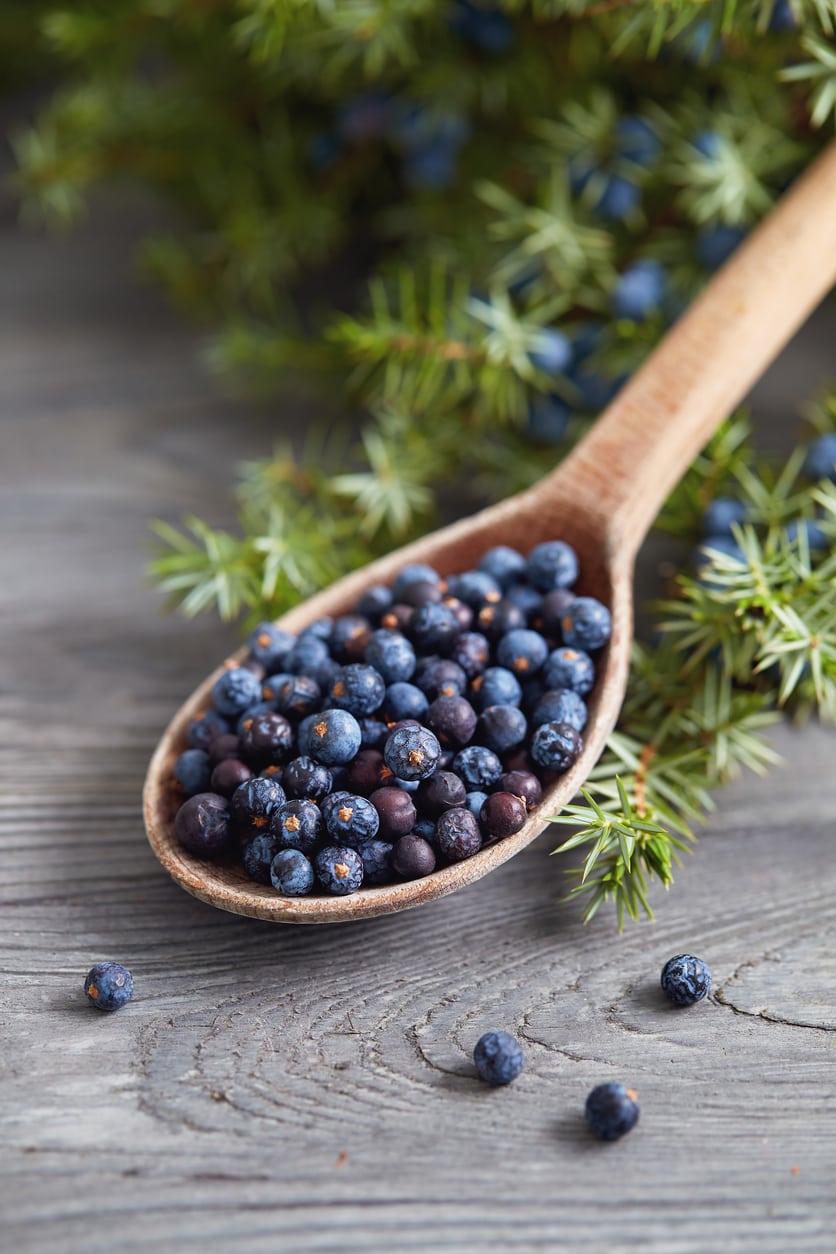Juniper Berry Harvest Tips: How To Pick Juniper Berries
Many junipers produce berries that are toxic and inedible, but Juniperus communis berries are edible! Safe, aromatic and interesting, learn how to know which ones are safe how to harvest them.


Is It Safe To Pick Juniper Berries – Learn About Harvesting Juniper Berries
Junipers are common in many parts of the world. There are about 40 species of juniper, most of which produce toxic berries. But for the educated eye, Juniperus communis, or Common Juniper, has edible, pleasantly pungent berries that can be used as a flavoring, incense, medicinal, or part of a cosmetic preparation.
Continue reading for tips on how to pick juniper berries and how to recognize safe juniper plants.
Is it Safe to Pick Juniper Berries?
Those blue berries coated with a white powder are the source of the flavoring in gin. You don't have to be a gin lover to want to learn when to harvest juniper berries.
Is it safe to pick juniper berries? Make sure you can recognize the bush that is the source of this safe seasoning, or some very unpleasant experiences may await from harvesting juniper berries off the wrong plant.
The common juniper is hardy in USDA zones 2 to 6 and is found in a wide variety of soils. The plants grow in Asia, Europe, and North America.
Recognizing this species can be difficult because it grows in a wide variety of forms. It may be a low, spreading shrub or a tall tree up to 25 feet (7.5 m) in height.
Common juniper is an evergreen conifer with blue-green awl-shaped needles. The berries are actually cones and are bitter when unripe but have a pleasant taste when fully mature.
Sign up for the Gardening Know How newsletter today and receive a free copy of our e-book "How to Grow Delicious Tomatoes".
When to Harvest Juniper Berries
Juniper berries ripen for 2 to 3 years. The first year produces flowers, the second a hard green berry, and by the third, they are ripening to a deep blue.
Pick berries in the fall once the plant has lots of blue berries. There will be berries in all stages of ripening, but the green ones are not very aromatic and taste bitter.
You will have to fight the birds for ripe cones during juniper berry harvest time. If the plant is located on your property, cover it with bird netting to protect those precious cones from greedy birds.
How to Pick Juniper Berries
Harvesting juniper berries can be a slightly painful experience because their leaves are very sharp. Some people even develop a bit of a rash, so make sure you have long sleeves and pants, as well as gloves for your juniper berry harvest.
There are two ways to go about harvesting. The first is to simply pick ripe cones from the tree by hand. As they are rather tiny, this can either be tedious or a nice way to spend a fall afternoon.
If the prospect picking the cones by hand doesn't appeal to you, there is a quicker and easier way. Set a tarp under the plant and then shake it vigorously. Ripe and unripe berries will rain down onto the tarp. Then you just need to separate the purplish-blue ones and leave the rest to grow more plants naturally or to compost into the soil.

Bonnie Grant is a professional landscaper with a Certification in Urban Gardening. She has been gardening and writing for 15 years. A former professional chef, she has a passion for edible landscaping.